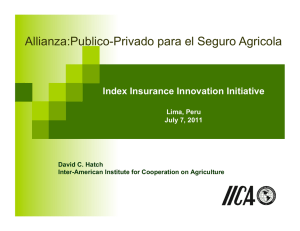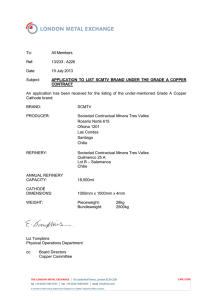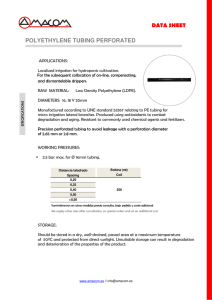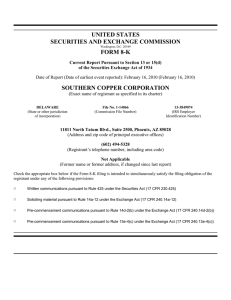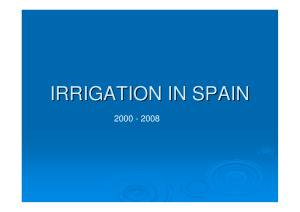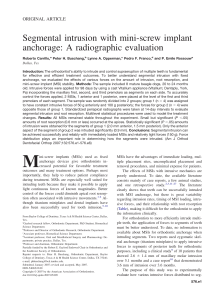Dripper Root Intrusion Study: Copper Plate Effectiveness
Anuncio
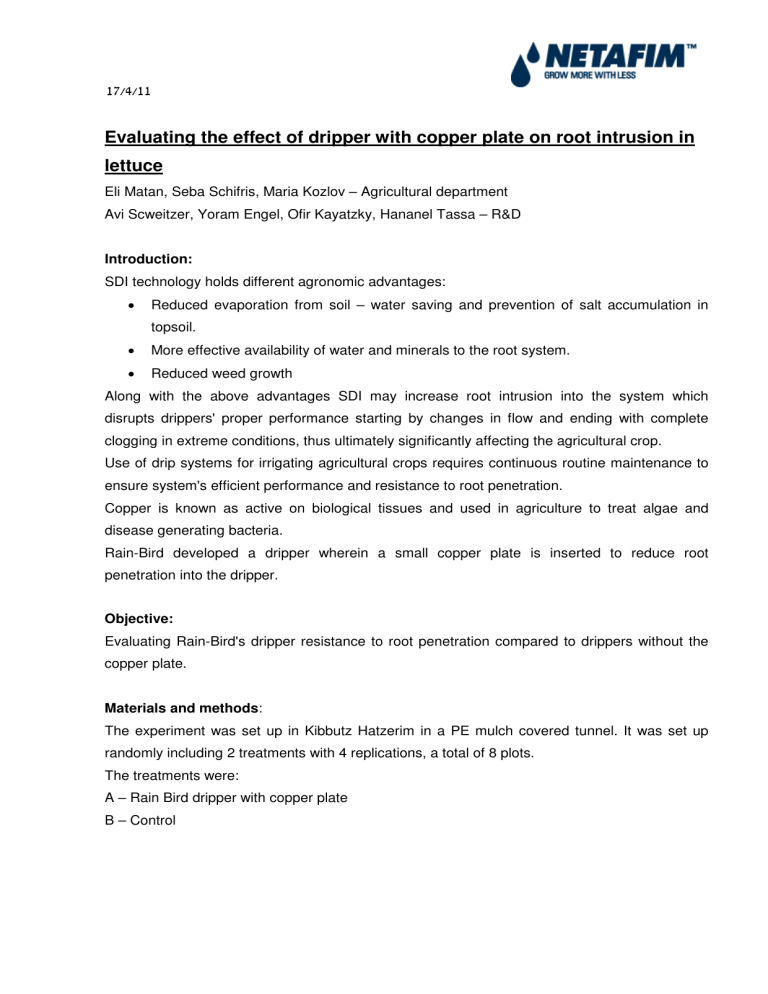
Evaluating the effect of dripper with copper plate on root intrusion in lettuce Eli Matan, Seba Schifris, Maria Kozlov – Agricultural department Avi Scweitzer, Yoram Engel, Ofir Kayatzky, Hananel Tassa – R&D Introduction: SDI technology holds different agronomic advantages: Reduced evaporation from soil – water saving and prevention of salt accumulation in topsoil. More effective availability of water and minerals to the root system. Reduced weed growth Along with the above advantages SDI may increase root intrusion into the system which disrupts drippers' proper performance starting by changes in flow and ending with complete clogging in extreme conditions, thus ultimately significantly affecting the agricultural crop. Use of drip systems for irrigating agricultural crops requires continuous routine maintenance to ensure system's efficient performance and resistance to root penetration. Copper is known as active on biological tissues and used in agriculture to treat algae and disease generating bacteria. Rain-Bird developed a dripper wherein a small copper plate is inserted to reduce root penetration into the dripper. Objective: Evaluating Rain-Bird's dripper resistance to root penetration compared to drippers without the copper plate. Materials and methods: The experiment was set up in Kibbutz Hatzerim in a PE mulch covered tunnel. It was set up randomly including 2 treatments with 4 replications, a total of 8 plots. The treatments were: A – Rain Bird dripper with copper plate B – Control The crop was set up in containers of the following dimensions: 4m length, 0.50m width, 0.35cm height and total volume of 700liter. Each container represented one experimental plot (8 plots = 8 containers). Irrigation system: One dripperline was buried at 15cm depth in the center of each of the crop containers. In treatment A : Rain-Bird dripperline 2.3l/h was buried at 0.30m spacing. In treatment B, the control, 2.3l/h drippers were buried at 0.30m spacing where none of the other root preventing techniques (copper plate, chemical injection, short irrigation shifts every some days etc.) was applied. Each of the containers used 13 drippers, namely 52 drippers per treatment. Vegetative material: Lettuce plants were taken from Shorashim nursery and planted on 13/1/1. Each planter was planted with 2 rows and 0.20m between the rows, total: 40 plants per planter/ plot Irrigation and fertigation: until rooting (7 days from planting) plants were irrigated daily using CoolNet™ misters complemented by additional irrigation and fertigation using the drip system detailed below. Fertigation – During the entire experiment plants were fertigated every shift with compound fertilizer 6:4:4 in 1.4liter/m3 (100ppm Nitrogen, phosphorus and Potassium respectively). At a certain point along the experiment, regular irrigation was suspended to create plant stress to induce root intrusion. On 5/4/11 dripperlines were retrieved and taken to the lab to evaluate the extent of root intrusion. Evaluation was done based on the following key: 0 = No root intrusion 1 = Root penetration up to half the bath area = little penetration 2 = Root penetration up to over half the bath area = heavy penetration Results: The percentage of drippers with root penetration was similar in the Rain-Bird and control treatments, 73%. Root penetration % Light penetration % Heavy penetration % Root penetration 80 70 50 40 30 % of drippers 60 20 10 Rain-Bird dripper Control 0 Dripper type Rain-Bird treatment was even slightly inferior from the control, as in the heavy parameter this treatment showed 37% penetration in the drippers compared to 14% in the heavy parameter in the control. It should be noted that at the end of the experiment while opening the Rain-Bird drippers, high sand content was detected in the dripper's bath, indicating another drawback of the dripper, absence of AS feature, which is highly necessary in subsurface drip systems. It can be unequivocally concluded that the presence of copper plate within the Rain-Bird dripper does not offer any advantage to the dripper's resistance against root penetration. Note : About 10 years ago, a similar test was performed to evaluate the effect of copper particles presence inside Netafim™ dripper on the improvement of drippers' resistance to root penetration. The conclusions showed similar results followed by the decision: to stop the application of copper as a root intrusion preventing-method.
